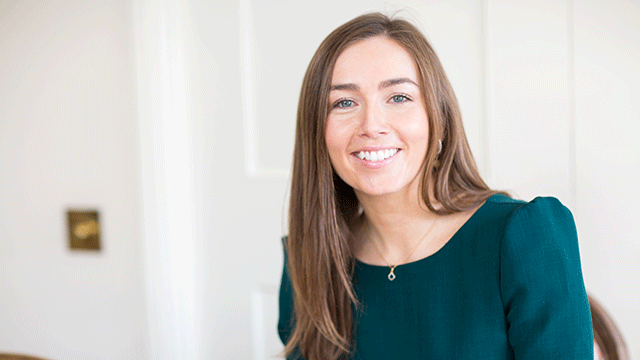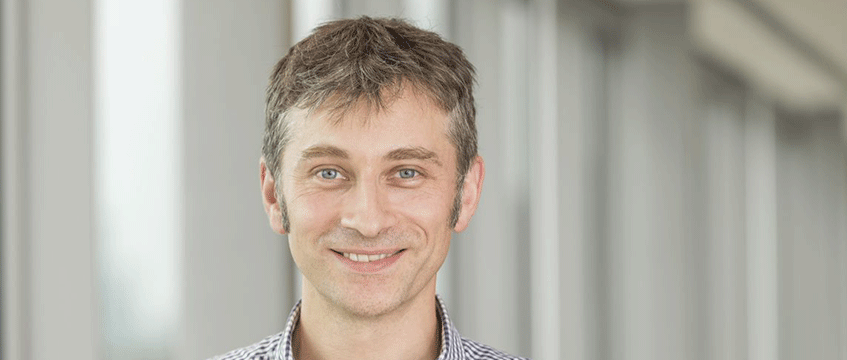A former officer in the Royal Engineers turned sustainability specialist, James Tiernan is leading Unite Students’ sustainability strategy. That means overseeing the introduction of its commitment to net zero operations and construction by 2030, its drive for 100% renewable energy, and its efforts to encourage responsible living habits across its population of 70,000 students each year. Tiernan was also involved in the planning application for Unite’s first net zero development, an 843-bed scheme in Paddington, W2, which is currently awaiting approval.
Here, EG speaks with him about the plans.
EG Close to 100% of the power Unite uses is renewable, so what’s next for the operational portfolio?
JT Our first corporate power purchase agreement kicks in in April this year. That’s our first tranche of really deep green renewable power. We have been buying REGO-backed [Renewable Energy Guarantees of Origin] power since 2017, but this goes to the next level. We are also looking at future opportunities for further PPAs and other purchasing strategies. We want to make sure we are helping really deliver and drive that creation of new additional generation capacity.
We invested about £30m into energy reduction from 2014 up to about 2019. For understandable reasons, and to focus on looking after our students, there was a bit of a lull in capital investment on energy efficiency during Covid, but that doesn’t mean it went away. What it really gave us was some time to consolidate and build our new sustainability strategy. We have identified about £100m of additional energy efficiency opportunities across our portfolio of 172 properties. We are planning to deploy around £10m a year.
EG What about development?
JT We are committed to making sure that Paddington is one of our most sustainable new-builds ever, and not just from a carbon and energy perspective, but also from a waste perspective, from a wellbeing perspective as well. We have been working with the planning authority to get that building to a position where we can move forward with it. But it’s not in isolation. That is part of our wider approach to how we build buildings from now on. If you imagine it probably takes two or three years to build a building from acquisition all the way through to completion, we have only really got a couple of cycles before we need to be delivering fully net-zero carbon buildings in 2030.
The focus is really on reducing embodied carbon because the operational emissions of all those buildings are picked up within our operational reporting. So we have aligned with the RIBA benchmark for embodied carbon and operational performance.
EG Does the fact that your end users are particularly savvy about climate change and sustainability put extra pressure on or added momentum behind your ESG strategy?
JT It does put an extra dimension on to this. When we surveyed students recently, we got a very clear message that this really matters. They expect us to do more. They expect society, government, everyone to do to do more. But we’re not doing this just for the students, it’s something investors obviously expect through the lens of ESG risk and mitigating the exposure we have – and all businesses have – to environmental and social risks. It’s also something our university partners and our employees expect.
My personal view, historically, was that the pressure was going to come from students in the higher education sector. Universities were early adopters of net zero when the private sector wasn’t so focused on it. I think there has been a bit of a reversal in the past couple of years and now it is really being driven in in the commercial world by investors, frankly, and the recognition of ESG risks and the fact that climate change, along with other social risks, represent significant and real material risks to their investment and their long-term returns.
EG Does having climate change-savvy end users translate into behaviour to match those aspirations?
JT Students are only human, like all of us. We absolutely think we have a duty to help our students live as sustainably as they can while they’re at university. I think we also have an opportunity there to help them form really lasting, sustainable living habits.
We are going to be relaunching a positive impact programme this year, which is a programme developed in conjunction with the National Union of Students, based on its Green Impact Award scheme. That’s about helping our employees do the right thing in their building, predominately from an environmental perspective, and getting them working with students to do the right thing – whether it’s around managing waste better, raising awareness around energy efficiency, water saving or whatever it might be.
There are a lot of other opportunities, and the pace of change of technology presents challenges, but also a whole lot of opportunities about how we can do that better and do it fast – that could involve embedding things in the our [student] app in future, looking at how we can gamify that and really help students to form those responsible living habits that we want them to adopt and take forward when they move on.
EG Before moving into the sustainability sector, you served for seven years as a commissioned officer in the Corps of Royal Engineers, providing specialist engineering support to military training and operations around the world. How does that experience shape your approach today?
JT I have been working in sustainability for around 14 years and see myself as a sustainability professional now, but there are things the military gives you in terms of focus on the mission and getting things done. This is not exclusive to the military in any sense, but it did teach me to focus on the outcome and then work back to figure out the best way of getting there, rather than just diving straight in. We have grown a team which is quite diverse in its backgrounds, experiences and capabilities and I think that is going to be key in helping us achieve and deliver the very challenging problems that we face.

To send feedback, e-mail julia.cahill@eg.co.uk or tweet @EGJuliaC or @EGPropertyNews











